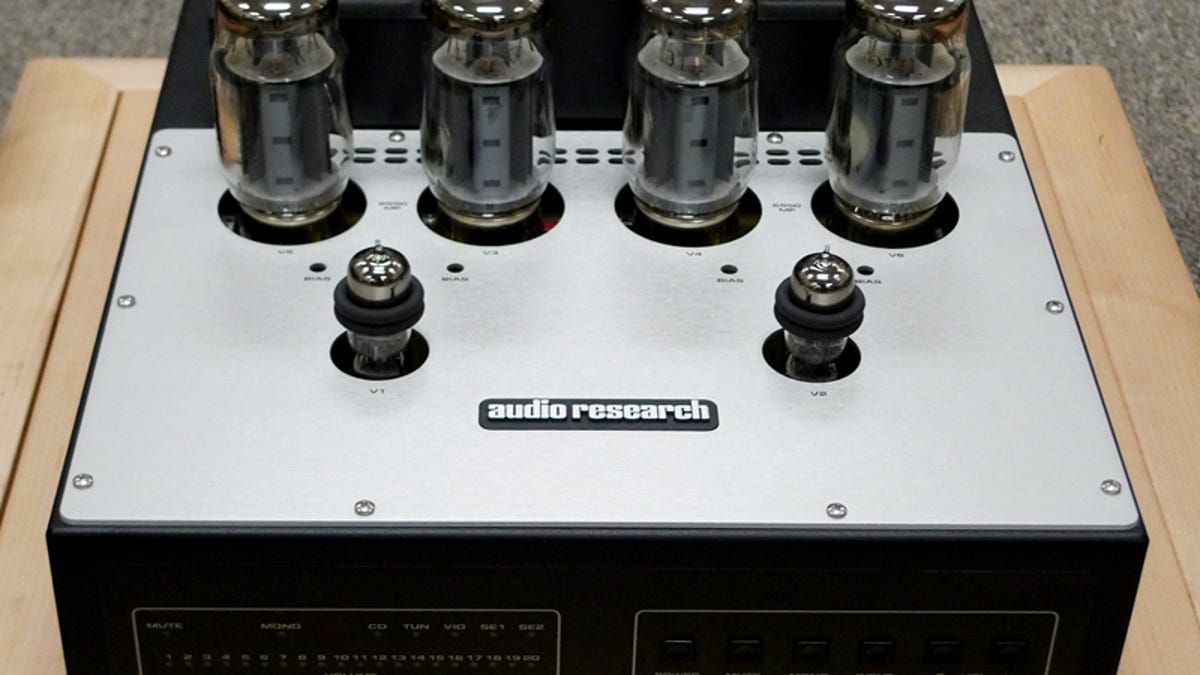High-end audio sounds great, lasts decades
Today's AV receivers go out of date in a few years, but Audio Research's made in the U.S. tube amplifiers provide decades of great sound!

At the end of the 1960s it looked like transistors had completely replaced vacuum tubes for hi-fis, musicians' amplifiers, recording gear, etc., but then a handful of American high-end companies began designing new tube components. Audio Research was in the vanguard of the movement, and is still crafting electronics coveted by audiophiles across the globe. During my recent visit to the Audio Research factory in Plymouth, Minn., I spent some quality time listening to its least expensive integrated amplifier, the VSi60.
As high-end amplifiers go, the VSi60 isn't very big--it measures 14 inches by 8 inches by 16 inches--and it has an anodized aluminum top plate with an inset Audio Research logo. The supplied remote controls all functions including power, muting, stereo/mono, input select, and volume up/down. The rear of the chassis has five pairs of RCA inputs for CD, tuner, video, etc.; a mono subwoofer output; and custom-made, speaker-wire binding posts. It's a 50-watt-per-channel stereo amplifier.
The VSi60 proudly displays its 6H30 driver tubes and KT120 output tubes on the top plate, and uses audiophile-grade parts throughout the design. Each VSi60 is hand-crafted and completely hand-soldered, assembled, and not only bench tested and measured; every amp's sound quality is carefully scrutinized over a pair of very high-end speakers. If the sound is not up to snuff, it's sent back to production to be corrected.
Since I was unfamiliar with the sound of Audio Research's reference system, I compared the VSi60 with the company's very best gear, namely its Reference Anniversary Preamplifier ($24,995), the Reference 250 power amps ($25,990), with a pair of Wilson Audio MAXX 3 speakers ($69,500). Before we go any further I have to admit something: I don't think Audio Research tube gear sounds "tubey." That is to say, overly rich, warm, or mellow. It doesn't sound like solid-state, either; Audio Research designs just provide a clear "window" to the sound of music.
First up, "The Way," from Neil Young's "Chrome Dreams II" CD, which features a large vocal choir backing up Young. The clarity of the sound, the voices, piano, and percussion were a thrill to behold. This 2007 recording's quality really helps, of course, but when you play a great recording, the Audio Research/Wilson Audio system can conjure a remarkably faithful recreation of the original event.
I also played some early 1960s Duke Ellington CDs recorded in the famed 30th Street Columbia Records studios. These recordings put you in the acoustic space of the studio, and when they're played over a world-class system you feel like you're in the studio with the band. Tube electronics reveal that virtual reality aspect of recordings better than solid-state gear; the presentation is more three-dimensional, so the instruments have an almost physical presence between the speakers. Those impressions were based on the sound of the more expensive Audio Research system.
Switching over to the VSi60 amplifier, the system couldn't play as loud; the bass weight and oomph were scaled back a bit, but the essential effortless quality of the sound was much the same. The Audio Research "sound" is hard to describe, because it's essentially neutral, and that's just as true for its most affordable as it is for its flagship designs.
The VSi60 amplifier sells for $4,495, so sure, it's expensive, but it's designed to sound spectacular for many decades. That's no hype; Audio Research already offers reasonably priced repair services for nearly every product it has made over the last four decades. Sony, Apple, Chevy, or BMW don't service every product that bears their name. A good number of Audio Research customers are still enjoying components they bought when Jimmy Carter was president. Other than the sound I can think of one other small reason why Audio Research customers are so loyal: when you call the company during business hours, a live human being answers the phone!

